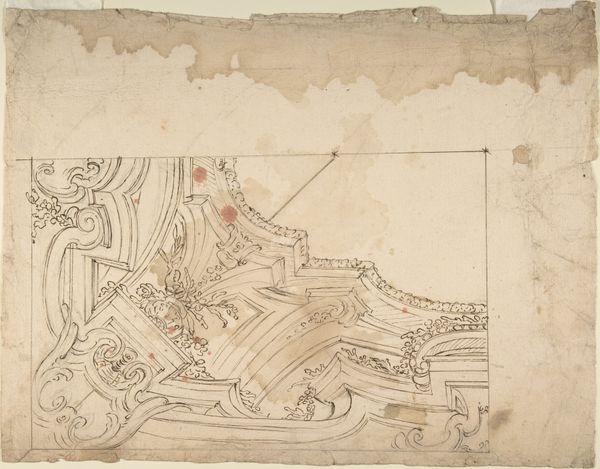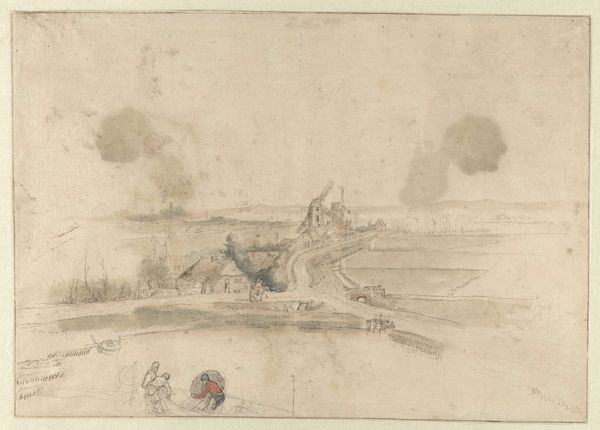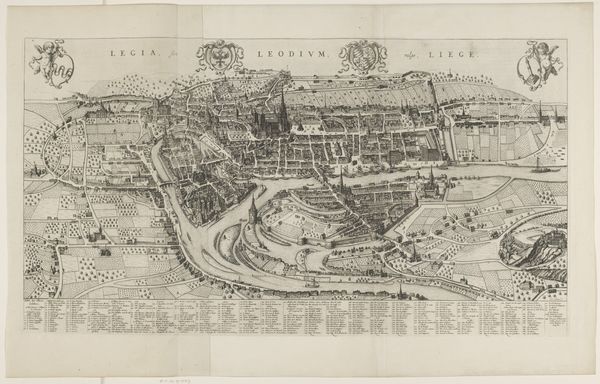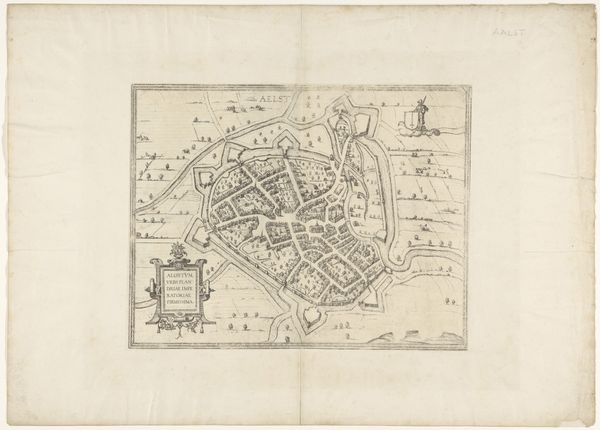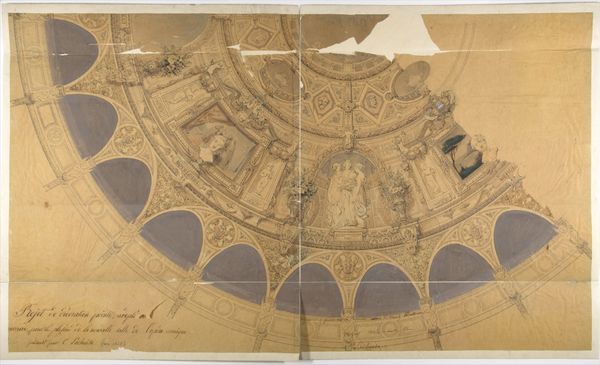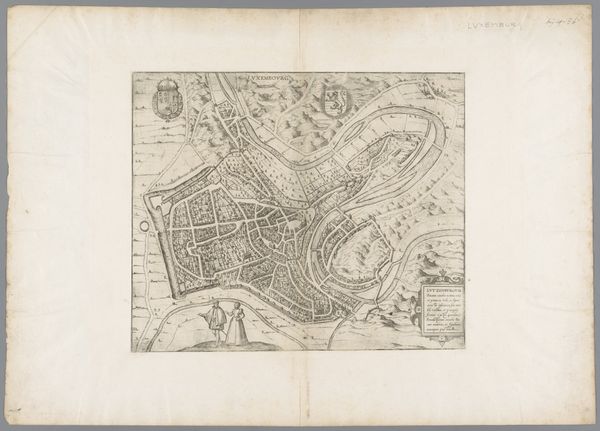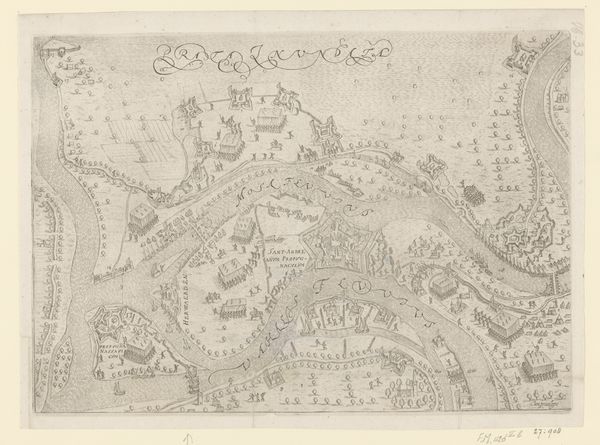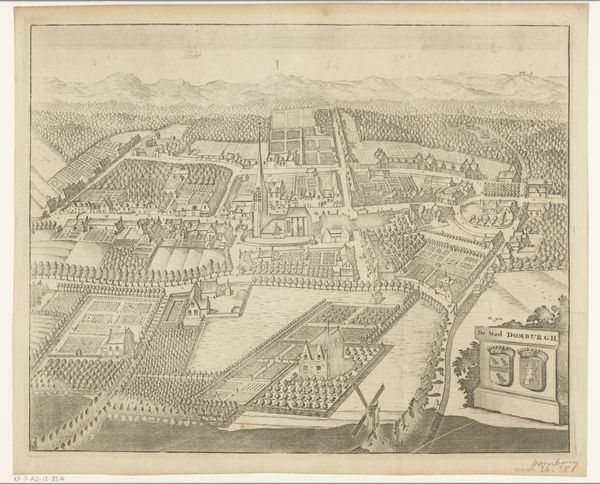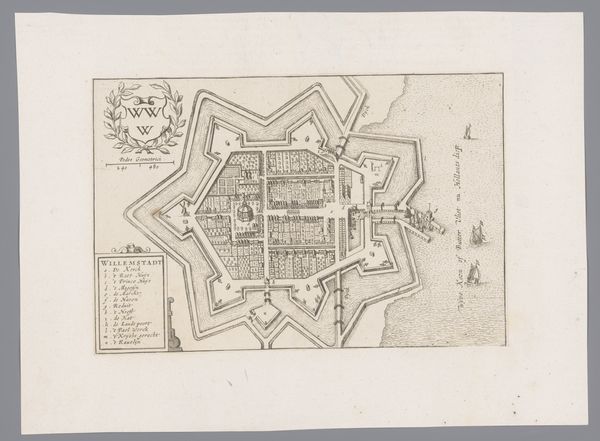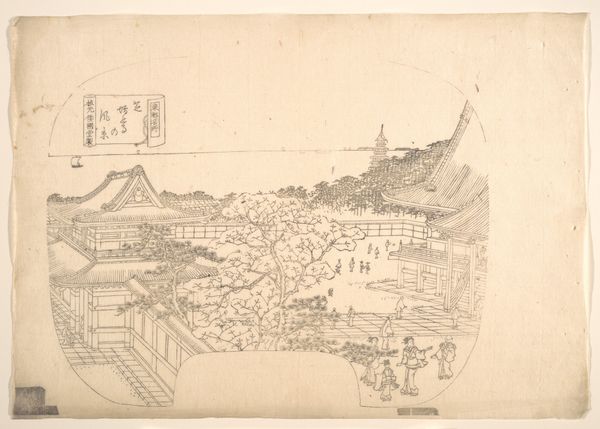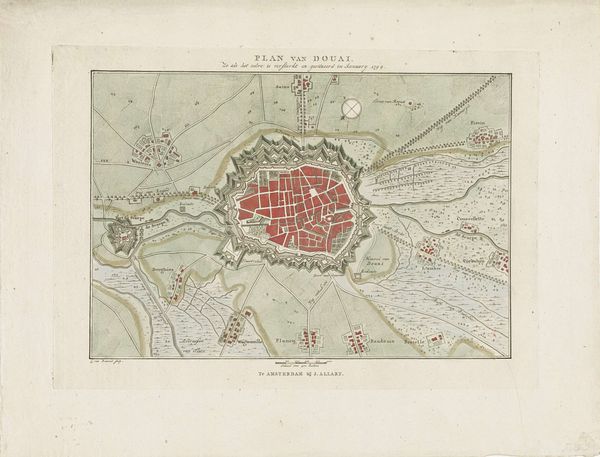
Design for One Eighth of an Illusionistic Ceiling of a Dome 1700 - 1780
0:00
0:00
drawing, print, watercolor, architecture
#
drawing
# print
#
11_renaissance
#
watercolor
#
coloured pencil
#
cityscape
#
architecture
Dimensions: 9 3/4 x 9 13/16 in. (24.8 x 24.9 cm)
Copyright: Public Domain
Editor: Here we have a work titled "Design for One Eighth of an Illusionistic Ceiling of a Dome," created by an anonymous artist sometime between 1700 and 1780. It’s a drawing, made with watercolor, and possibly colored pencil. I’m struck by how incomplete it feels, like a fragment of a grand vision. What do you see in this piece, focusing perhaps on the materials and construction of this planned architecture? Curator: This fragmented state offers us a direct look into the labor and process behind these monumental ceiling paintings. Consider the materiality: watercolor, colored pencil – relatively humble materials used to plan something extravagant. The drawing itself becomes an artifact of production. We can analyze it almost like reverse-engineering labor. How do you think the choice of these "lesser" materials challenges conventional ideas around high art and architectural grandeur? Editor: That's a fascinating point! I hadn’t thought of it in terms of challenging the status of “high art.” It feels almost like a peek behind the curtain, revealing the work and planning needed to create an illusion. So the materials reveal more about the creative act? Curator: Exactly. The sketch is as valuable as a finished painting. Consider what it communicates about patronage too. What social class or institution commissioned this architectural vision? The labor involved was surely immense, yet captured here so modestly. Editor: Thinking about the social context, the expense of building a dome like this and paying for the elaborate ceiling artwork implies a wealthy patron, someone interested in displaying power through art and architecture. The materials chosen for the design seem practical, perhaps meant to convey the essence efficiently before investing in costly paints. Curator: Precisely. The tension lies between the opulence *promised* and the relatively frugal means used in its planning. The design phase holds its own economic and social complexities distinct from the execution. This pushes us to rethink traditional boundaries around "art" versus mere design, particularly when both serve ideological functions. What would you say you are taking away from analyzing its production? Editor: I now appreciate how focusing on materials and design reveals the hidden layers of labor, expense, and social status behind grand architectural visions like these. Thank you! Curator: My pleasure! And it emphasizes that art's value can reside in its making just as much as in its final form.
Comments
No comments
Be the first to comment and join the conversation on the ultimate creative platform.


